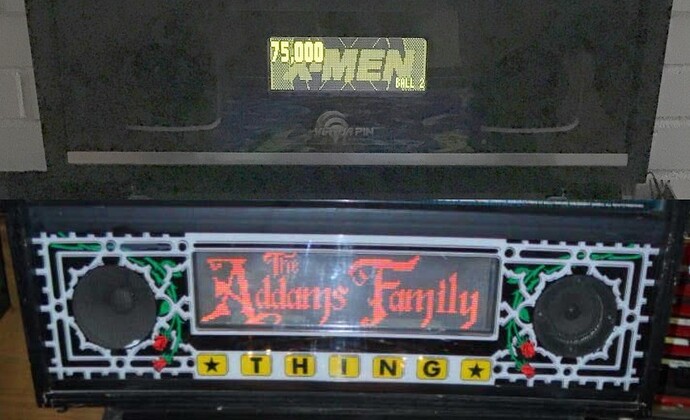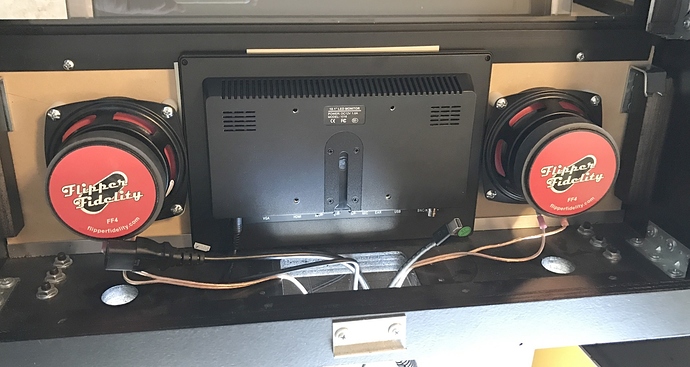The diminutive size of the 7" DMD, and the lack of IPS display on it (it’s a rather cheap TN panel), kept bugging me. It’s not even proportionally correct!
So I replaced it with a 10.1" IPS monitor:
The IPS monitor is worlds better: brighter, deeper blacks, and significantly larger!
Fortunately, the 10.1" monitor fits perfectly in that space between the speakers. I just cut out the middle with a hacksaw, and used double sided tape to attach it around the edges. The top “edge” is the top trim.
I also had to cut a new decorative cover using heavy craft paper, using the old cover as a template. I used a black sharpie to make the sides of the cut wood black so they’re not visible, either. The only downside is I have no clear plastic in front of the DMD display at the moment, still looking for heavy-ish plastic I can slip in there to complete the cover.
The 1050 Ti video card I use and recommend has three video ports
- Displayport (in use for backglass monitor)
- HDMI (in use for playfield monitor)
- DVI-D
Get a DVI-D to HDMI converter (or a cable) and connect the 10.1" display via its HDMI port. I was also able to pull out the USB hub needed to power the old 7" USB DMD display, so this simplifies the setup a fair bit – one video card driving all three displays!


